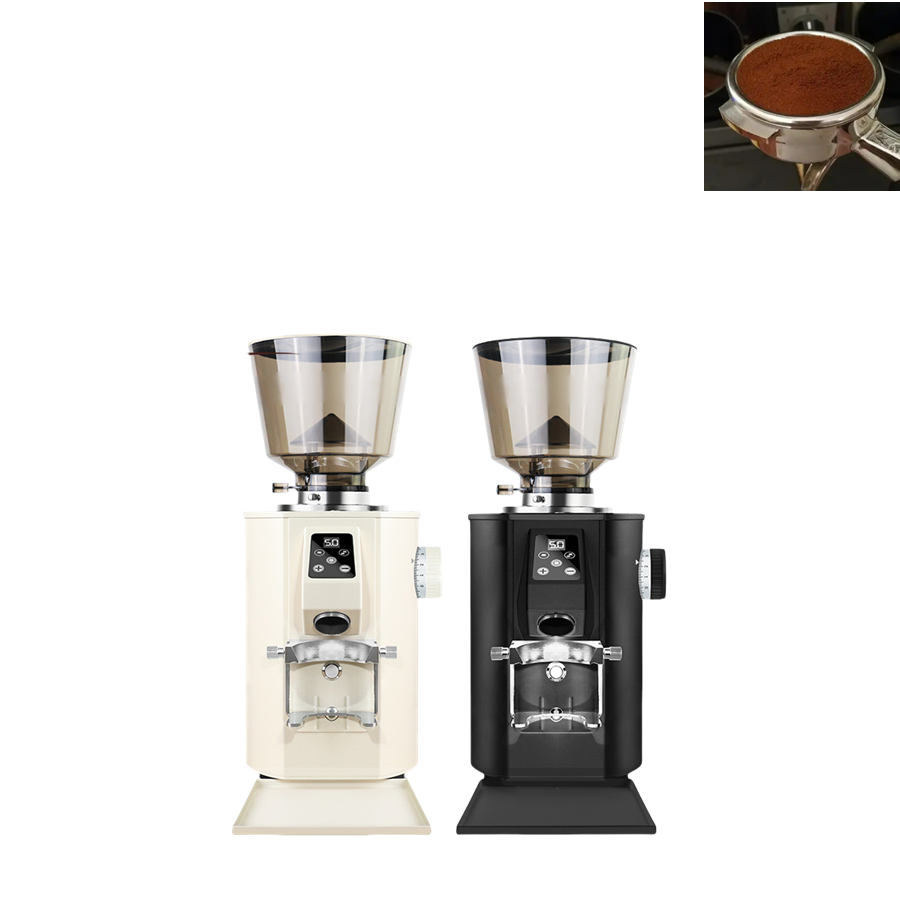The adaptability of the grinding machine to different coffee bean varieties needs to be comprehensively considered in combination with the characteristics of the bean variety, roasting degree and extraction method. The following is a specific analysis:
1. Characteristics and grinding requirements of different bean varieties
Arabica beans: They have rich and diverse flavors and are fragrant. They usually need to be finely ground to fully release their complex flavors. For instance, when grinding Yergacheffe beans from Ethiopia, attention should be paid to the uniformity of the particles to avoid excessive fine powder leading to over-extraction.
Robusta beans: They have a rich and mellow taste and are usually used in the blending of espresso. Its grinding degree can be slightly coarser than that of Arabica beans to balance its higher caffeine content and bitterness.
2. The influence of baking degree on grinding
Light-roasted beans: The internal structure has a small degree of expansion and a relatively hard texture. It is recommended to use a finer grinding degree to improve the extraction efficiency. A bean grinder with a flat knife core is more suitable for light roasting of beans and can better bring out their acidity and floral aroma.
Medium-baked beans: The internal structure has a moderate degree of expansion. It is recommended to use a grinding degree as fine as sugar. The bean grinder with a ghost tooth grinding core is more suitable for medium-roasted beans and can balance their sourness, sweetness and bitterness.
Deep-roasted beans: They have a relatively loose internal structure and high extraction efficiency. It is recommended to use coarser grinding to prevent over-extraction. The bean grinder with a conical knife grinding core is more suitable for deep-roasted beans, which can reduce the production of fine powder and avoid a bitter taste.
3. The type of grinder is compatible with the type of bean
Flat knife coffee grinder: It grinds evenly but produces a lot of fine powder, making it suitable for light-roasted Arabica beans or espresso that pursue a rich flavor. However, it is necessary to pay attention to controlling the fine powder rate to avoid excessive extraction.
Conical knife bean grinder: Low fine powder rate, regular particle shape, suitable for medium-dark roasting Arabica beans or Robusta beans. It has a high grinding efficiency and can better retain the aroma and sweetness of coffee.
Ghost tooth coffee grinder: The particle shape is more regular, the sweetness is more prominent, and it is suitable for medium-roasted Arabica beans with complex flavors. However, it is relatively expensive and suitable for users who have high requirements for flavor.
4. Grinding adjustment under different extraction methods
Espresso: It needs to be finely ground (such as fine salt) to create sufficient resistance, and extracted under a pressure environment above 9bar. The grinding degree of Arabica and Robusta beans should be adjusted according to the proportion. Generally, the grinding degree of Robusta beans can be slightly coarser.
Hand-brewed coffee: Moderately ground (like white granulated sugar) is suitable for most Arabica beans. Light-roasted beans can be thinned appropriately, while dark-roasted beans need to be coarser to avoid bitterness.
French press: Coarse-ground (like sea salt) is suitable for deep-roasting Arabica or Robusta beans, which can retain more body and aroma.
5. Practical suggestions
Regularly calibrate the grinding machine: Wear of the cutter head can cause the grinding degree to be too coarse. It is necessary to calibrate it every 3 to 6 months to ensure the consistency of grinding.
Adjust in combination with the characteristics of the bean variety: For instance, Geisha coffee beans are picky about their growing environment and have a unique flavor. During grinding, they need to be more refined to bring out their floral and citrus aromas. Mandheling beans have a high thickness and the grinding degree can be appropriately adjusted.
Avoid overheating of the grinder: Continuous grinding can cause the cutter head to heat up, affecting the flavor. It is recommended that the single grinding amount does not exceed 50g, or a grinding machine with a low-speed motor can be selected.


